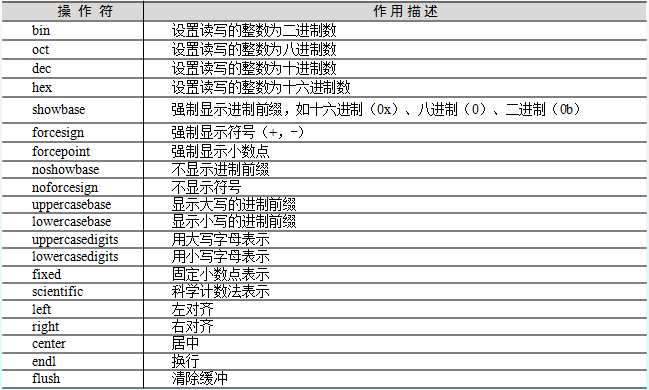版权声明:本文为博主原创文章,未经博主允许不得转载。 https://blog.csdn.net/lvdepeng123/article/details/81060917
参考:http://blog.csdn.net/xgbing/article/details/7772953
二进制文件的读写文件可以使用QFile类、QStream
文本文件的读写建议使用QTextStream类,它操作文件更加方便。
打开文件时,需要参数指定打开文件的模式:
| 模式 | 值 | 描述 |
| QIODevice::NotOpen | 0x0000 | 不打开 |
| QIODevice::ReadOnly | 0x0001 | 只读方式 |
| QIODevice::WriteOnly | 0x0002 | 只写方式,如果文件不存在则会自动创建文件 |
| QIODevice::ReadWrite | ReadOnly | WriteOnly | 读写方式 |
| QIODevice::Append | 0x0004 | 此模式表明所有数据写入到文件尾 |
| QIODevice::Truncate | 0x0008 | 打开文件之前,此文件被截断,原来文件的所有数据会丢失 |
| QIODevice::Text | 0x0010 | 读的时候,文件结束标志位会被转为’\n’;写的时候,文件结束标志位会被转为本地编码的结束为,例如win32的结束位’\r\n’ |
| QIODevice::UnBuffered | 0x0020 | 不缓存 |
QIODevice::Text在读写文本文件时使用,这样可以自动转化换行符为本地换行符。
(1)写入文本文件
123
123
(2)读取文本文件
123
(1)写入文本文件
-
QFile f("c:\\test.txt");
-
if(!f.open(QIODevice::WriteOnly | QIODevice::Text))
-
{
-
cout << "Open failed." << endl;
-
return -1;
-
}
-
-
QTextStream txtOutput(&f);
-
QString s1("123");
-
quint32 n1(123);
-
-
txtOutput << s1 << endl;
-
txtOutput << n1 << endl;
-
-
f.close();
123
123
(2)读取文本文件
-
QFile f("c:\\test.txt");
-
if(!f.open(QIODevice::ReadOnly | QIODevice::Text))
-
{
-
cout << "Open failed." << endl;
-
return -1;
-
}
-
-
QTextStream txtInput(&f);
-
QString lineStr;
-
while(!txtInput.atEnd())
-
{
-
lineStr = txtInput.readLine();
-
cout << lineStr << endl;
-
}
-
-
f.close();
123
123
QTextStream的流操作符
参考:http://blog.csdn.net/xgbing/article/details/7772953
二进制文件的读写文件可以使用QFile类、QStream
文本文件的读写建议使用QTextStream类,它操作文件更加方便。
打开文件时,需要参数指定打开文件的模式:
| 模式 | 值 | 描述 |
| QIODevice::NotOpen | 0x0000 | 不打开 |
| QIODevice::ReadOnly | 0x0001 | 只读方式 |
| QIODevice::WriteOnly | 0x0002 | 只写方式,如果文件不存在则会自动创建文件 |
| QIODevice::ReadWrite | ReadOnly | WriteOnly | 读写方式 |
| QIODevice::Append | 0x0004 | 此模式表明所有数据写入到文件尾 |
| QIODevice::Truncate | 0x0008 | 打开文件之前,此文件被截断,原来文件的所有数据会丢失 |
| QIODevice::Text | 0x0010 | 读的时候,文件结束标志位会被转为’\n’;写的时候,文件结束标志位会被转为本地编码的结束为,例如win32的结束位’\r\n’ |
| QIODevice::UnBuffered | 0x0020 | 不缓存 |
QIODevice::Text在读写文本文件时使用,这样可以自动转化换行符为本地换行符。
(1)写入文本文件
123
123
(2)读取文本文件
123
(1)写入文本文件
-
QFile f("c:\\test.txt");
-
if(!f.open(QIODevice::WriteOnly | QIODevice::Text))
-
{
-
cout << "Open failed." << endl;
-
return -1;
-
}
-
-
QTextStream txtOutput(&f);
-
QString s1("123");
-
quint32 n1(123);
-
-
txtOutput << s1 << endl;
-
txtOutput << n1 << endl;
-
-
f.close();
123
123
(2)读取文本文件
-
QFile f("c:\\test.txt");
-
if(!f.open(QIODevice::ReadOnly | QIODevice::Text))
-
{
-
cout << "Open failed." << endl;
-
return -1;
-
}
-
-
QTextStream txtInput(&f);
-
QString lineStr;
-
while(!txtInput.atEnd())
-
{
-
lineStr = txtInput.readLine();
-
cout << lineStr << endl;
-
}
-
-
f.close();
123
123
QTextStream的流操作符
